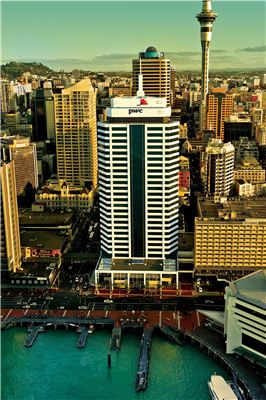Richard Smith, an economic historian, has written an amazing article which I have only just discovered, (thanks to the wonderful people on our Facebook group).
He comprehensively dismisses green capitalism, as recommended by people like Paul Hawken and Amory Lovins. He says green growth is a completely blind alley, a God that failed. You can’t shop your way to sustainability.
He describes scary scenarios for a four degrees global warming, notes the lack of progress on reducing emissions over two decades and concludes that there is something wrong with capitalism itself. “From Kyoto to Cancun, governments have all made it abundantly clear that they will not sacrifice growth today to save the planet tomorrow.”
Cap and trade usually gets watered down. This is because there is such a huge range of occupations that negatively affected by it that the lobby opposing it is too broad and too powerful. The theory was nice. The cap was supposed to come down over time, but industry lobbyists in Germany badgered the government for higher caps and special exemptions of all sorts. “They warned of unemployment, threatened to pack up and leave Germany and so on. In the end governments caved.” So in the market solution – cap and trade – profits ended up with the polluters and traders. He says even carbon taxes when implemented can never be set at high enough levels to make a difference. And it makes no difference if it is revenue neutral or not.
Smith writes,”But the problem is not just special interests, lobbyists and corruption. And courageous political leaders could not turn the situation around. Because that’s not the problem. The problem is capitalism…..There is no way to cut CO2 emissions by anything like 90 percent without imposing drastic cuts across the board in industrial production. Because we live under capitalism, not socialism, no one is promising new jobs to all those coal miners, oil drillers, gas frackers, power plant operators, farmers and fertilizer manufacturers, loggers and builders, auto builders, truck drivers, airplane builders, airline pilots and crews and countless other occupations whose jobs would be at risk if fossil fuel use were really seriously curtailed.”
This book reminded me of Naomi Klein’s This Changes Everything in that it clearly states the problem is capitalism.
The article was written two years ago. During the last eighteen months the price of oil has declined 70% and now hundreds of thousands of oil workers have lost their jobs. Soup kitchens in Aberdeen are feeding former oil workers and tens of thousands of jobs continue to be lost in Alberta and North Dakota and Texas alone. In Nigeria 120,000 jobs have been lost. This month the New York Times put the global figure at 250,000 jobs lost. Meanwhile, and connected with this, the global economy is under severe threat of a complete meltdown, and central banks clamber to find yet another way to calm the markets, always by injecting more debt into the system.
So what answers does Smith come up with? He offers eco-socialism. A quick look at their website indicates they would nationalise the fossil fuel industry and the industries that are heavily based on them which means the auto industry, aircraft and airlines, petrochemicals, and so on.
So while it is wonderful to see Richard Smith facing the political realities of climate change, overconsumption, waste and pollution, there is another step or two he could take. He could ask, “And is there something structurally in the system that has demanded this incessant growth? Is growth written into the system? Which system? And if so can that be reformed?” Now Richard Smith may know this. I wonder if he also knows you have to transform the land tenure system if you change the money system, since the first reform demands the second. When you know about the money system you often wish you didn’t – that you could put the genie back in the bottle, so to speak. The corporates, as TPP has shown us, are more powerful than ever before in history and that changes the political landscape and our strategies. Few centralised solutions are now politically possible.
In our movement we have been struggling for over four years to work out some politically viable solution to our massive global problems. Maybe nationalising all these industries doesn’t get to the bottom of the problem. We need elegant, more lasting solutions.
Anyway his article is superb as far as it goes. He also has a book of that name.
http://www.
And here’s a review of the book: http://www.truth-out.org/





